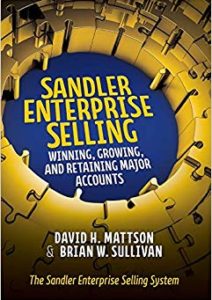With two years gone since the beginning of the pandemic crisis, I’ve been pondering what’s changed in selling behaviors. Not techniques, tactics or strategies but behaviors – the DNA of who we are. To truly understand what’s changed, I contacted Markku Kauppinen, who knows more about selling behaviors than anyone I know. Markku is the President and CEO of Extended DISC powered by FinxS, the award-winning international behavioral assessment company serving clients worldwide. I asked Markku about the biggest changes in selling since March of 2020 and he shared, “In the last two years, the gap between successful and average sales organizations has widened as evidenced by our Excuse Index®. Simply put, the top sales professionals use the new, virtual sales environment as an opportunity while others use it as an excuse. They have accepted virtual selling is the present reality and have adapted to it.”
A powerful and impactful insight. Consider the dictionary definition of “behavior” – the way in which a person acts in response to a particular situation. In reacting to COVID, some sales reps saw opportunity while others reverted to excuses. And their performances likely reflected their behaviors and affected their team selling members, extending the optimism or the malaise. Impactful, for sure.
But what about the collaborative strategy on the account side – team buying? Especially with major accounts, you face buyer networks with individuals from throughout the organization, each bringing their different perspectives to the buying process. Purchasing, accounting, legal and others are represented. And the importance of understanding these buyers typically focuses on functions, not personalities. While understanding functions is important, there’s much more that impacts effective communications with these key players and, of course, their behaviors. How they react to a particular situation.
Consider this. The buyer network’s finance manager represents a department familiar to us all so it’s logical to make assumptions about the finance department’s functional frame of reference. We all know finance, don’t we? But what about the finance manager as a person? What about his or her behavioral style, traits and tendencies? Do we assume that all finance managers are the same? Never forget the credo – “people buy from people”. Understanding that, how can you increase the likelihood of communicating successfully with buyers as real people and not just functional representatives?
First, identify their behavioral profiles to earn the right to tailor your communication. Truthfully, here’s no better process to follow than DISC. Markku and his team, BTW, would be great partners to help you make that happen.
Consider the important questions regarding the many personalities in major account buyer networks. From a DISC view, is the attorney a “D” – dominant? Is the finance manager a “C” – compliant? What about the marketing manager, an “I” – influencer and the project manager, an “S” – supportive? To complicate things further, how do the buyers’ styles map to the variety of personalities on your selling team? Without a framework to help, you’re flying blind. But with a practical guide for identifying and adapting to the maze of styles, you have a path forward.
In major account deals, our sales bias typically focuses on the sales investments made in efforts to win coveted deals – money, people, time, energy and more. But what about the spends of the buying organizations? They face daunting costs as well but there’s a multiplying difference. Why? Because they are already experiencing pain. Pain that’s causing the need for the major purchase. Something needs to be fixed or improved. If a bad decision is made, the pain will increase. Heads will roll. Lots of pressure, stress and risk. And the drama on both sides ratchets up the mortal enemy of communication – emotions. To win, the sales team must come prepared with a behavioral strategy.
How do you prevail? Of course, comprehensive preparation is a survival skill. So is following a Go/No-Go process to maximize the likelihood you pursue the right deals. The only thing worse than chasing a bad deal is winning it. With fundamentals in place, the behavioral framework is a key competitive advantage.
What’s critical? First, identify the key buying team members by title and by their specific impact on the deal. A buyer’s impact on a specific decision, of course, is very different than their title or authority. Their likely DISC styles are then determined through communication among the selling team members, collaborating on their variety of experiences with the individual buyers. That’s team selling. Then, to round out the profiles, customized motivators and demotivators for each buyer are identified.
Next, the selling team member’s profiles are highlighted – DISC styles and traits. Of course, this information should be very accurate. With this work done regarding both teams’ behavioral styles, you’re ready to build effective communication strategies for the individual buyers – what to do and what not to do. The final step is crafting the concrete action items, including due dates and the selling team members responsible – RACI is the perfect process to utilize. Planning these buyer touchpoints by aligning complementary behavioral styles sets the stage for productive interactions – ducks with ducks!
By understanding the behavioral styles of both buying and selling team members, you increase the likelihood of successful communication. It’s a challenge, for sure, but one that must be championed as an opportunity and not used as an excuse. Put in the time and you’ll earn the right to make the behavioral alignment of team buying with team selling a true competitive advantage. And you’ll win deals as a result.






Comments